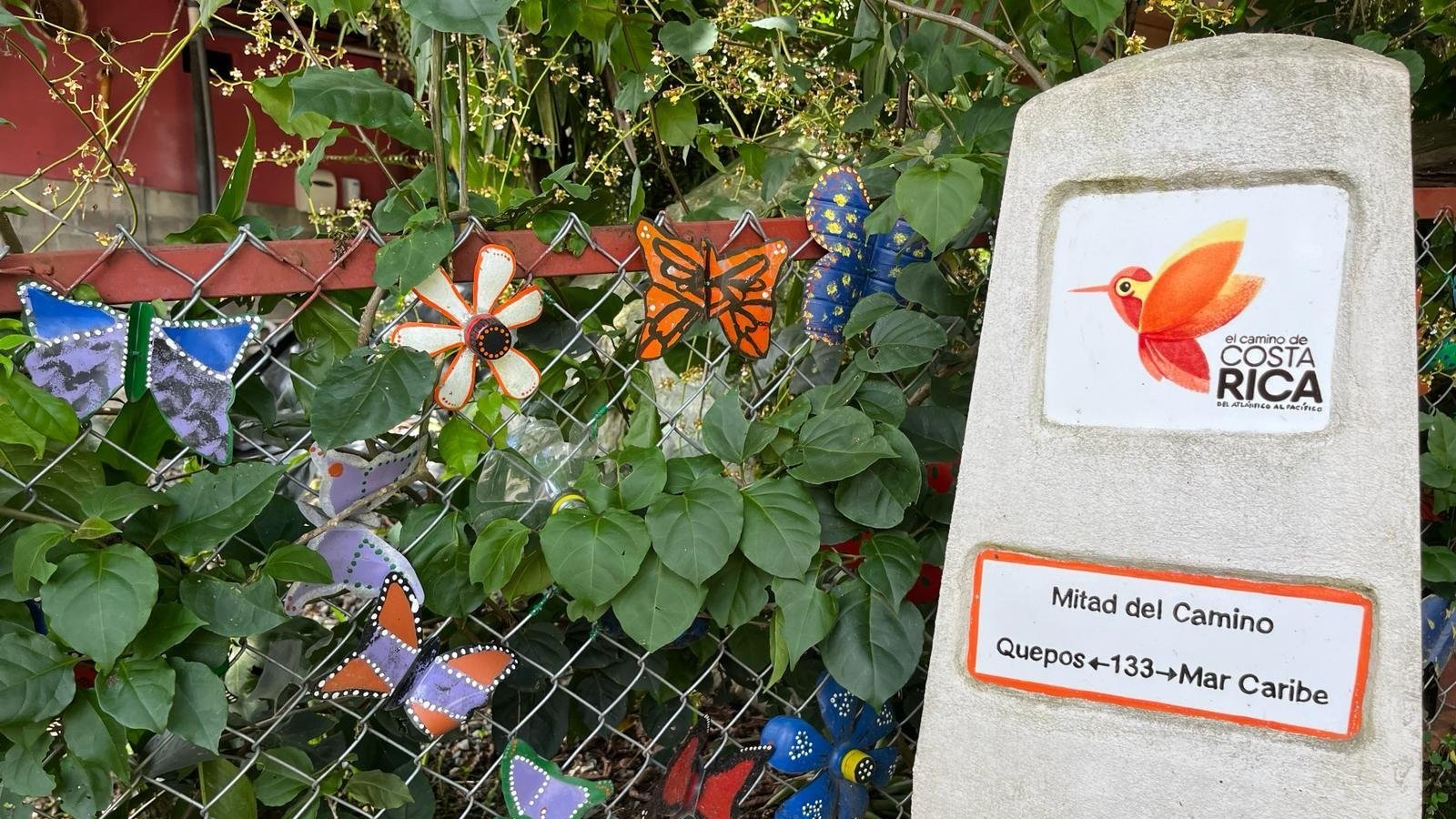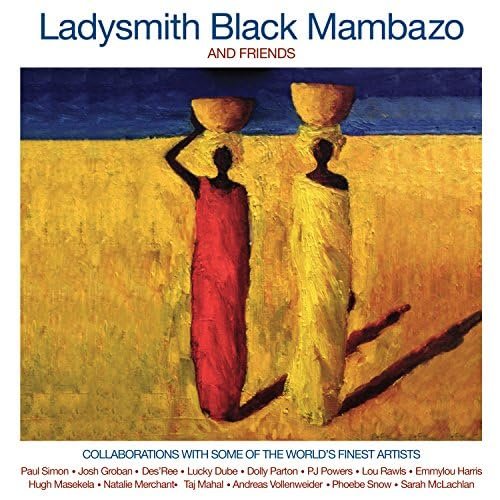Spring 2024 Newsletter
Coast to Coast & Person to Person:
El Camino de Costa Rica
El Camino de Costa Rica is a sixteen etapa (stage) hiking route traversing Costa Rica from its Caribbean to Pacific shores. It wends through diverse microclimates such as tropical rain forests and cloud forests, protected conservation areas, indigenous communities and other tiny villages. Much of the route and its ancillary small and micro enterprises are still largely unknown to the majority of Costa Rica’s international and domestic travelers.
From its inception in 2015, the Costa Rican nonprofit Asociación Mar a Mar had a bold vision that propelled its creation of the Camino: a “development engine for the trail’s vulnerable communities bringing new resources, social infrastructure, and badly needed income that will ensure conservation and protection for the existing biodiversity.”
Linda and Ann taking a break at the Camino marca for etapa 10
Less than a decade later, the evolution of the Camino has been intertwined with approximately 25 communities, 300 families and 45 businesses. Behind these numbers are many women, several of whom my longtime friend Linda and I met while hiking stages 7,8,10,11 and 15 last August. What stays with me is not simply their involvement but their passion, pride and positive impacts of their hard work.
Conchita and Ann at Verdesana Lodge
Conchita: From Vision to Reality
Thousands of people from all over the globe have found inspiration from walking along El Camino de Santiago in Europe. Conchita Espino is the only person I know whose Camino walk slightly more than a decade ago inspired her not only to ask “How can we create a coast to coast camino in Costa Rica?” but also create a plan, engage key stakeholders, and make it a reality. She is a true visionary and works tirelessly with the families, tiny communities, government offices, board rooms, and philanthropies. Her mind includes an endless “database” with which she is facilitating connections constantly to help those living along the various stages power forward the Camino vision.
While Conchita and I had participated together in online programming and communications on several occasions, we had never met in person. She generously created the plan and facilitated the arrangements for our Camino time in August. On our arrival at Verdesana Lodge (Stage 10- in Reserva Palo Verde), who was there to surprise and welcome us? When I expressed my delight about finally meeting Conchita in person, she responded “If you can come all the way from Chicago to hike on the Camino de Costa Rica, I can certainly drive 1.5 hours to meet you.” That’s Conchita.
Micro-Business Builders
When hiking and hungry there is nothing better than a home cooked meal prepared with locally grown ingredients. Such was the case during our lunch stops along the trail. Yet these stops were much more than the delicious food.
For Pilar, it was the artistically carved and brightly colored signage that first caught our eyes. Created on five vertically placed pieces of wood leading with the words “Bienvenidos Caminantes” (Welcome Walkers) followed by carved painted red and yellow hummingbirds, the distinctive brand of the Camino, and “Se Vende Helados” (we sell ice cream!). Who wouldn’t want to stop at this home for food and conversation?!
A few days later Luz welcomed us to her Donde Luz restaurant and kitchen where she had prepared a food spread that could easily have served a dozen people. Fortunately, though not surprisingly, a few family members wandered in and out to partake of the meal as well. Luz was very proud of her cooking business and expressed appreciation for the Asociacion Mar a Mar technical and financial assistance to reconfigure her kitchen to include a long island for buffet style serving and a larger table to accommodate more guests.
Mariana in Purisal was especially delighted to show us her new “soda” (a small locally owned eatery featuring Costa Rican food) and take our photos in front of the Camino “marca” (brand/mark as seen in above photos). Each one is beautifully designed and painted on a concrete structure with the hummingbird, etapa number and distance in kilometers to the Mar Caribe (Caribbean Sea) and also to the town of Quepos on the Pacific coast. They are very helpful hiker guideposts.
Other women along the way were excited to share recent news of their enterprises, inquire about Camino updates, and show us how they use their phones to forward photos of solo hikers to those awaiting to host them at the next stage. One woman was excited to share with our guide, Jorle, that she would soon receive her unique stamp and ink to “certify” one’s visit in their “Passaporte del Caminante.” (hiker's passport)
Each woman is unique yet they are all part of the same human backbone of the Camino. There would be no Camino without the flora, fauna and nature’s evolution, and the Camino would not be what it is without people such as these women. They are inextricably intertwined and mutually supportive.
Guidebook and Ann's "Passaporte del Caminante"
Jorle: Sweet Incline and Attitude
Jorle Aguilar has owned a dental practice for 20 years. She loves her clients. She also loves hiking the Camino and has found a way to center both in her life. Each week includes part-time clinical work as well as guiding small groups and managing marketing tasks for the Camino.
Photo credit: Jorleny Aguilar
I rarely saw Jorle without a smile on her face. Her happiness and laughter are infectious. When I expressed concern about the difficulty of the elevation for our hike one day, she said “Don’t worry. It’s just a ‘sweet incline.’” That expression, literally and metaphorically, is now a part of me.
Want to learn about the Ruta Fosiles (Route of the Fossils)? Wonder why a Blue Morpho butterfly always seems to appear on each hiking day? The evolution of the marcas of the Camino? Why the Camino takes one alongside the boundary of Tapanti National Park rather than through it? The real story about the “poor man’s umbrella” plant? Ask Jorle.
Having hiked the full Camino for the first time in July 2018, Jorle knows well the ins and outs, inclines and valleys, and the people of the 16 stages. As I prepared to write this article, I reached out to ask her the number of times that she had walked the full Camino. She replied:
“I really don’t know. I decided when I had six times of crossing it completely that I would not count them again, that I would live each time as if it was the first time I crossed with people, and I would guide them with the same astonishment and happiness as the first group I took.”
Linda, Jorle, and Ann. Photo credit: Jorleny Aguilar
Jorle’s wise words were a good reminder. I’m not going to say that numbers and measurements don’t matter. Of course they do. But when we have the privilege of recreational travel far or near, why do so many of us tout/share the days, places, or number of visits instead of the experiences and inspiration in what we may encounter, often through serendipity, along the way?
I’m really grateful to the people, especially the women, who welcomed us along the Camino–where roads meet trails meet trees, flowers, birds meet mountains and valleys meet Pilar, Luz, Jose, and others-- their lives and livelihoods, their communities. This is my kind of luxury-- a welcome respite from the seemingly endless cycle of so much that's messed up in today's world; an infusion of personal passion, positivity and small steps forward. Hope and inspiration-- one person, one family, one community multiplied.
Whether one has a day or two weeks, El Camino de Costa Rica is open to all. If this article piqued your curiosity and you’d like to learn more, reach out to connect.
Asociación Mar a Mar is an affiliate of Amigos of Costa Rica, a nonprofit organization of which I am currently chair of the board. My time on the Camino was particularly special because I was able to see and experience firsthand some of the impacts of our work, especially through the people we came to know along the way.
Drum Roll: A Musical Gateway to Travel
Getting ready for a trip? Wondering how you’ll find enough time to prepare yourself with some advance reading and watching a documentary or two? That’s a challenge I often face.
How about engaging easily in a musical journey? I’ve got just the one for you and for me!
Playlists from Argentina, Japan, and Ethiopia
Congrats to my friends and colleagues, Kirsten Gardner and Jeff Stivers, co-founders of Outlier Journeys on the recent launch of their Outlier Journeys Spotify Channel! With the help of curator Campbell Diebolt, the DJ of the weekly world-music, DUTY FREE RADIO, the channel has begun to offer country-specific playlists featuring local musicians in an array of styles. South Africa, Mexico, Chile and Ethiopia are already up with many others on the way.
Listening recently to the sounds of South Africa’s Ladysmith Black Mambazo took me back to the time many decades ago when I was so fortunate to see and hear them perform not long after they had arrived on the international music scene. It also reinforced my excitement for turning a vision of spending some time in South Africa into a reality.
Music is history, culture and connection. We can enjoy and celebrate a diversity of languages, instruments, and voices of people around the world. It touches our emotions, and we discover common bonds that can bring us together. Whether one’s on a walk, listening to a fado singer in a crowded Lisbon club or making time for reflection on a rainy afternoon, music is a part of the never ending journey of travel.
“Music is the language of the soul.”










